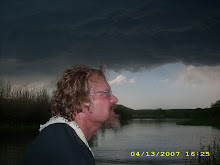In the cloudless sky the September sun burned the land with its fiery ring, branding all living things in the desert whether capable of conscious thought or driven only by the instinct of survival. The rains had stopped weeks ago and now Bina trudged an unmarked path between bald earth and the occasional carpet of the flag like blue grama grass.
Blue Grama is a perennial grass native to the Trans-Pecos. It grows in the hot lowlands of the Chihuahua Desert to the high forested areas of the mountain peaks. It grows throughout North America from Alberta and Manitoba to the Rocky Mountains, Great Plains and Midwest, thriving in a broad range of topography and soil types.
The plant height rarely exceeds 15 inches but the roots can grow as deep as five feet and outward as much as 16 inches, watering and aerating the soils as it burrows. The grass is graze, drought and cold resistant. It offers high protein for livestock tends not to freeze and uses water extensively when available but is capable of going dormant during low or no water conditions.
One way the Blue Grama propogates is with seeds and does best when they are dispersed by wind, birds, insects or mammals beyond the root reach of neighboring adult plants, as adult plants tend to exploit moisture in the seedling’s root zone.
But more often, Blue Grama propagates via a process known as vegetative reproduction. Tiny stems at the base of the plant known as tillers can produce multiple stems and thick tuffs with bushy seed heads from a single seedling indefinitely.
Vegetative Reproduction is more an expansion of biomass of the individual plant rather than the creation of a new organism. The tillers at the base of the plants are new individuals except they are clones, new in every aspect, except genetically. How this process appears to reset the aging clock remains a mystery.

No comments:
Post a Comment